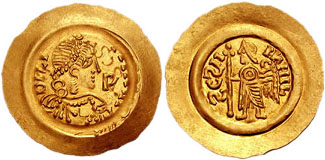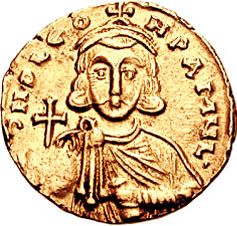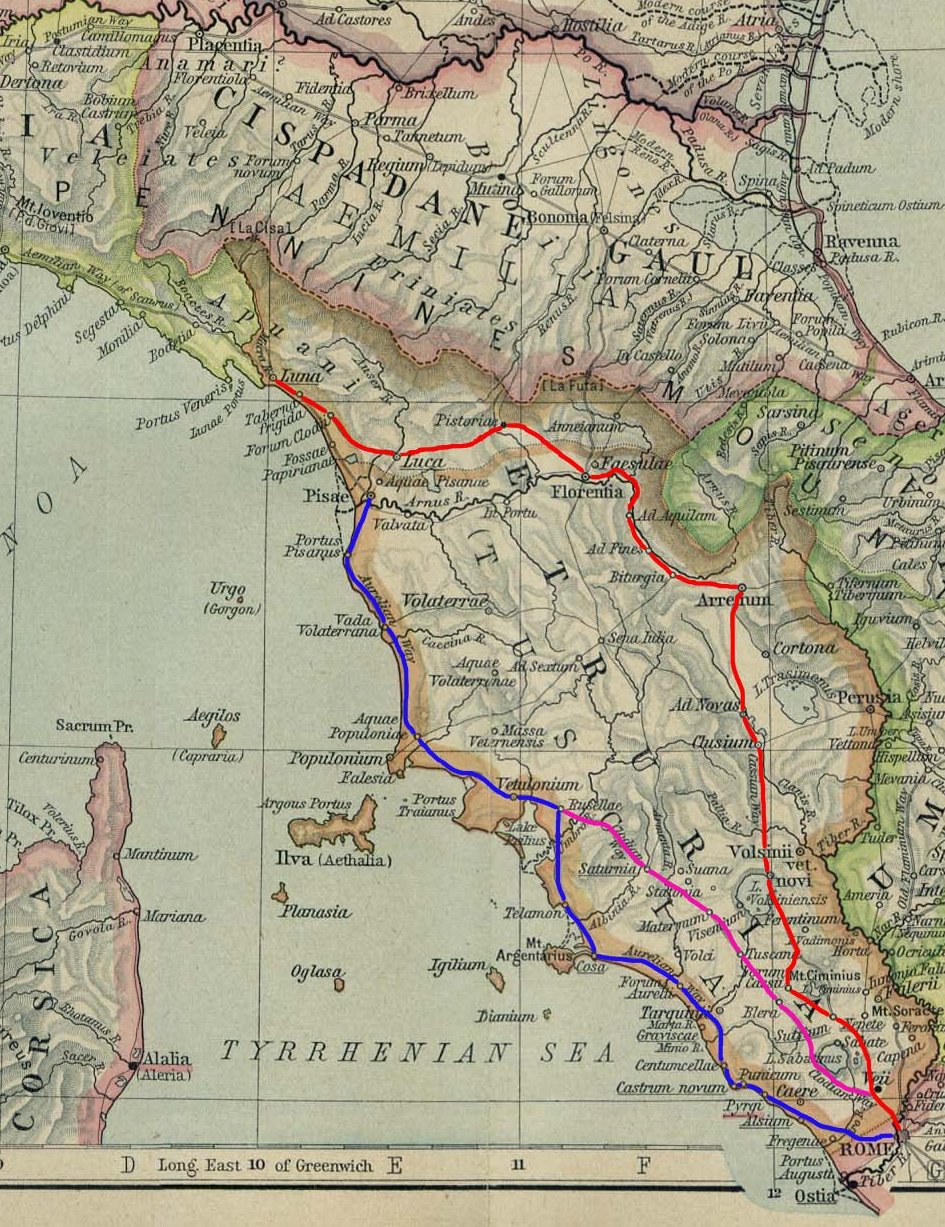|
Sutri
Sutri (Latin ''Sutrium'') is an Ancient town, modern ''comune'' and former bishopric (now a Latin titular see) in the province of Viterbo, about from Rome and about south of Viterbo. It is picturesquely situated on a narrow tuff hill, surrounded by ravines, a narrow neck on the west alone connecting it with the surrounding country. It is one of I Borghi più belli d'Italia ("The most beautiful villages of Italy"). The modern ''comune'' of Sutri has a few more than 5,000 inhabitants. Its ancient remains are a major draw for tourism: a Roman amphitheatre excavated in the tuff rock, an Etruscan necropolis with dozens of rock-cut tombs, a Mithraeum incorporated in the crypt of its church of the Madonna del Parto, a Romanesque Duomo. History Ancient Sutrium occupied an important position, commanding as it did the road into Etruria, the later Via Cassia: Livy describes it as one of the keys of Etruria, nearby Nepi being the other. It came into the hands of Rome after the fall of V ... [...More Info...] [...Related Items...] OR: [Wikipedia] [Google] [Baidu] |
Donation Of Sutri
The Donation of Sutri was an agreement reached at Sutri by Liutprand, King of the Lombards and Pope Gregory II in 728. At Sutri, the two reached an agreement by which the city and some hill towns in Latium (like Vetralla) were given to the Papacy, "as a gift to the blessed Apostles Peter and Paul" according to the ''Liber Pontificalis''. The pact formed the first extension of papal territory beyond the confines of the Duchy of Rome and was the first of two land transfers from Liutprand to the Church of Rome. History The Lombards had long been adherents to the Christian sect of Arianism, but they had converted to Catholicism over time. After his election as King of the Lombards in 712, Liutprand faced a series of challenges from the strength of aristocratic families and the threat of secession from the grand duchies in his domain. The duchies of Spoleto and Benevento in Langobardia Minor were particularly autonomous from Liutprand's central power and were separated from the res ... [...More Info...] [...Related Items...] OR: [Wikipedia] [Google] [Baidu] |
Liutprand The Lombard
Liutprand was the king of the Lombards from 712 to 744 and is chiefly remembered for his multiple phases of law-giving, in fifteen separate sessions from 713 to 735 inclusive, and his long reign, which brought him into a series of conflicts, mostly successful, with most of Italy. He is often regarded as the most successful Lombard monarch, notable for the Donation of Sutri in 728, which was the first accolade of sovereign territory to the Papacy. Early life Liutprand's life began inauspiciously. His father was driven to exile among the Bavarians, his older brother Sigipert was blinded by Aripert II, king of the Lombards, and his mother Theodarada and sister Aurona were mutilated (their noses and ears were cut off). Liutprand was spared only because his youth made him appear harmless, described as adolescens in Paul the Deacon's ''Historia Langobardorum'' (Book VI, xxii), suggesting that he was 'probably older than 19 but still in his twenties'. He was released from Aripert II's c ... [...More Info...] [...Related Items...] OR: [Wikipedia] [Google] [Baidu] |
Pope Gregory II
Pope Gregory II (; 669 – 11 February 731) was the bishop of Rome from 19 May 715 to his death on 11 February 731.Mann, Horace. "Pope St. Gregory II." The Catholic Encyclopedia Vol. 6. New York: Robert Appleton Company, 1909. 18 September 2017 His defiance of Emperor as a result of the in the Eastern Empire prepared the way for a long series of revolts, schisms, and civil wars that eventually led to the establishment of the [...More Info...] [...Related Items...] OR: [Wikipedia] [Google] [Baidu] |
Papal Territory
The Papal States ( ; ; ), officially the State of the Church, were a conglomeration of territories on the Italian peninsula under the direct sovereign rule of the pope from 756 to 1870. They were among the major states of Italy from the 8th century until the unification of Italy, which took place between 1859 and 1870, culminated in their demise. The state was legally established in the 8th century when Pepin the Short, king of the Franks, gave Pope Stephen II, as a temporal sovereign, lands formerly held by Arian Christian Lombards, adding them to lands and other real estate formerly acquired and held by the bishops of Rome as landlords from the time of Constantine onward. This donation came about as part of a process whereby the popes began to turn away from the Byzantine emperors as their foremost temporal guardians for reasons such as increased imperial taxes, disagreement with respect to iconoclasm, and failure of the emperors, or their exarchs in Italy, to protect R ... [...More Info...] [...Related Items...] OR: [Wikipedia] [Google] [Baidu] |
Via Cassia
The Via Cassia () was an important Roman road striking out of the Via Flaminia near the Milvian Bridge in the immediate vicinity of Rome and, passing not far from Veii, traversed Etruria. The ''Via Cassia'' passed through Baccanae, Sutrium, Volsinii, Clusium, Arretium, Florentia, Pistoria, and Luca, joining the Via Aurelia at Luna. The Via Cassia intersected other important roads. At mile 11 the Via Clodia diverged north-north-west. At Sette Vene, another road, probably the Via Annia, branched off to Falerii. In Sutrium, the '' Via Ciminia'' split off and later rejoined. The date of its construction is uncertain: it cannot have been earlier than 187 BC, when the consul Gaius Flaminius constructed a road from Bononia to Arretium, which must have coincided with a portion of the later Via Cassia. It is not mentioned by any ancient authorities before the time of Cicero, who in 45 BC speaks of the existence of three roads from Rome to Mutina: the Flaminia, the Au ... [...More Info...] [...Related Items...] OR: [Wikipedia] [Google] [Baidu] |
Liber Pontificalis
The ''Liber Pontificalis'' (Latin for 'pontifical book' or ''Book of the Popes'') is a book of biography, biographies of popes from Saint Peter until the 15th century. The original publication of the ''Liber Pontificalis'' stopped with Pope Adrian II (867–872) or Pope Stephen V (885–891), but it was later supplemented in a different style until Pope Eugene IV (1431–1447) and then Pope Pius II (1458–1464). Although quoted virtually uncritically from the 8th to 18th centuries, the ''Liber Pontificalis'' has undergone intense modern scholarly scrutiny. The work of the French priest Louis Duchesne (who compiled the major scholarly edition), and of others has highlighted some of the underlying redactional motivations of different sections, though such interests are so disparate and varied as to render improbable one populariser's claim that it is an "unofficial instrument of pontifical propaganda." The title ''Liber Pontificalis'' goes back to the 12th century, although it on ... [...More Info...] [...Related Items...] OR: [Wikipedia] [Google] [Baidu] |
Papacy
The pope is the bishop of Rome and the Head of the Church#Catholic Church, visible head of the worldwide Catholic Church. He is also known as the supreme pontiff, Roman pontiff, or sovereign pontiff. From the 8th century until 1870, the pope was the sovereign or head of state of the Papal States, and since 1929 of the much smaller Vatican City state. From a Catholic viewpoint, the primacy of the bishop of Rome is largely derived from his role as the apostolic successor to Saint Peter, to whom Petrine primacy, primacy was conferred by Jesus, who gave Peter the Keys of Heaven and the powers of "binding and loosing", naming him as the "rock" upon which the Church would be built. The current pope is Leo XIV, who was elected on 8 May 2025 on the second day of the 2025 papal conclave. Although his office is called the papacy, the ecclesiastical jurisdiction, jurisdiction of the episcopal see is called the Holy See. The word "see" comes from the Latin for 'seat' or 'chair' (, refe ... [...More Info...] [...Related Items...] OR: [Wikipedia] [Google] [Baidu] |
Vetralla
Vetralla is a town and ''comune'' in the province of Viterbo, in central Italy, south of that city, located on a shoulder of Monte Fogliano. History Vetralla's dominating fortified position in the heart of Etruscan territories has been continuously occupied since the Early Middle Ages. The Roman site, two kilometers distant, was a posting station on the Via Cassia; some ruins of walls and paving at S. Maria di Forcassi still mark the Roman Forum Cassii. The site was depopulated in the later Empire, when a smaller population retreated to the present strategic position commanding the valley, where it remained exposed to attack, in spite of the imposing walls that encircled it. The little fortress had been incorporated into the Papal States from their historic beginnings with the Lombard king Liutprand's Donation of Sutri (728) to Pope Gregory II, but the lords of Viterbo held it from 1110 to 1134. By 1145, Pope Eugene III was installed at Vetralla, safely removed from the v ... [...More Info...] [...Related Items...] OR: [Wikipedia] [Google] [Baidu] |
Nepi
Nepi (anciently ''Nepet'' or ''Nepete'') is a town and ''comune'' in the province of Viterbo, Lazio, central Italy. The town lies southeast of the city of Viterbo and about southwest from Civita Castellana. The town is known for its mineral springs, sold and bottled under the ''Acqua di Nepi'' brand throughout Italy. History The region was already occupied in the 8th century BC; neighbouring Pizzo had been occupied in the Bronze Age. Nepet became Roman before 386 BC, when Livy speaks of it and Sutrium as the keys of Etruria. In that year it was surrendered to the Etruscans and recovered by the Romans, who beheaded the authors of its surrender. It became a colony in 383 BC. It was among the twelve Latin colonies that refused further help to Rome in 209 BC. After the Social War it became a municipium. It is hardly mentioned in Imperial times, except as a station on the road ( Via Amerina) which diverged from the Via Cassia near the modern Settevene and ran to Amelia and ... [...More Info...] [...Related Items...] OR: [Wikipedia] [Google] [Baidu] |
Lazio
Lazio ( , ; ) or Latium ( , ; from Latium, the original Latin name, ) is one of the 20 Regions of Italy, administrative regions of Italy. Situated in the Central Italy, central peninsular section of the country, it has 5,714,882 inhabitants and a GDP of more than €212 billion per year, making it the country's second most populated region and second largest regional economy after Lombardy. The capital of Lazio is Rome, which is the capital city of Italy. Lazio was the home of the Etruscan civilization, then stood at the center of the Roman Republic, of the Roman Empire, of the Papal States, of the Kingdom of Italy and of the Italian Republic. Lazio boasts a rich cultural heritage. Great artists and historical figures lived and worked in Rome, particularly during the Italian Renaissance period. In remote antiquity, Lazio (''Latium'') included only a limited part of the current region, between the lower course of the Tiber, the Tyrrhenian Sea, the Monti Sabini and the Pontine M ... [...More Info...] [...Related Items...] OR: [Wikipedia] [Google] [Baidu] |
I Borghi Più Belli D'Italia
() is a non-profit private association of small Italian towns of strong historical and artistic interest, that was founded in March 2001 on the initiative of the Tourism Council of the National Association of Italian Municipalities, with the aim of preserving and maintaining villages of quality heritage. Its motto is ("The charm of hidden Italy"). Participants in the group are small population centres which risk neglect and abandonment because they lie outside the main tourist circuits. Initially they comprised about a hundred villages, but had increased to 361 in 2023. In 2012, the Italian association was one of the founding members of the international association The Most Beautiful Villages in the World, a private organization that brings together various territorial associations promoting small inhabited centres of particular historical and landscape interest. Description Admission criteria The criteria for admission to the association meet the following requirements: in ... [...More Info...] [...Related Items...] OR: [Wikipedia] [Google] [Baidu] |
Mithraeum
A Mithraeum , sometimes spelled Mithreum and Mithraion (), is a Roman temple, temple erected in classical antiquity by the Mithraism, worshippers of Mithras. Most Mithraea can be dated between 100 BC and 300 AD, mostly in the Roman Empire. The Mithraeum was either an adapted natural cave, cavern, or building imitating a cave. Where possible, the Mithraeum was constructed within or below an existing building, such as the Mithraeum found beneath the Basilica di San Clemente, Basilica of San Clemente in Rome. While most Mithraea are underground, some feature openings in the ceiling to allow light to enter, a reminder of the connection to the universe and the passage of time. The site of a Mithraeum may also be identified by its singular entrance or vestibule, which stands across from an apse at the back of which stands an altar on a pedestal, often in a recess, and its "cave," called the ''Spelaeum'' or ''Spelunca'', with raised benches along the side walls for the ritu ... [...More Info...] [...Related Items...] OR: [Wikipedia] [Google] [Baidu] |







